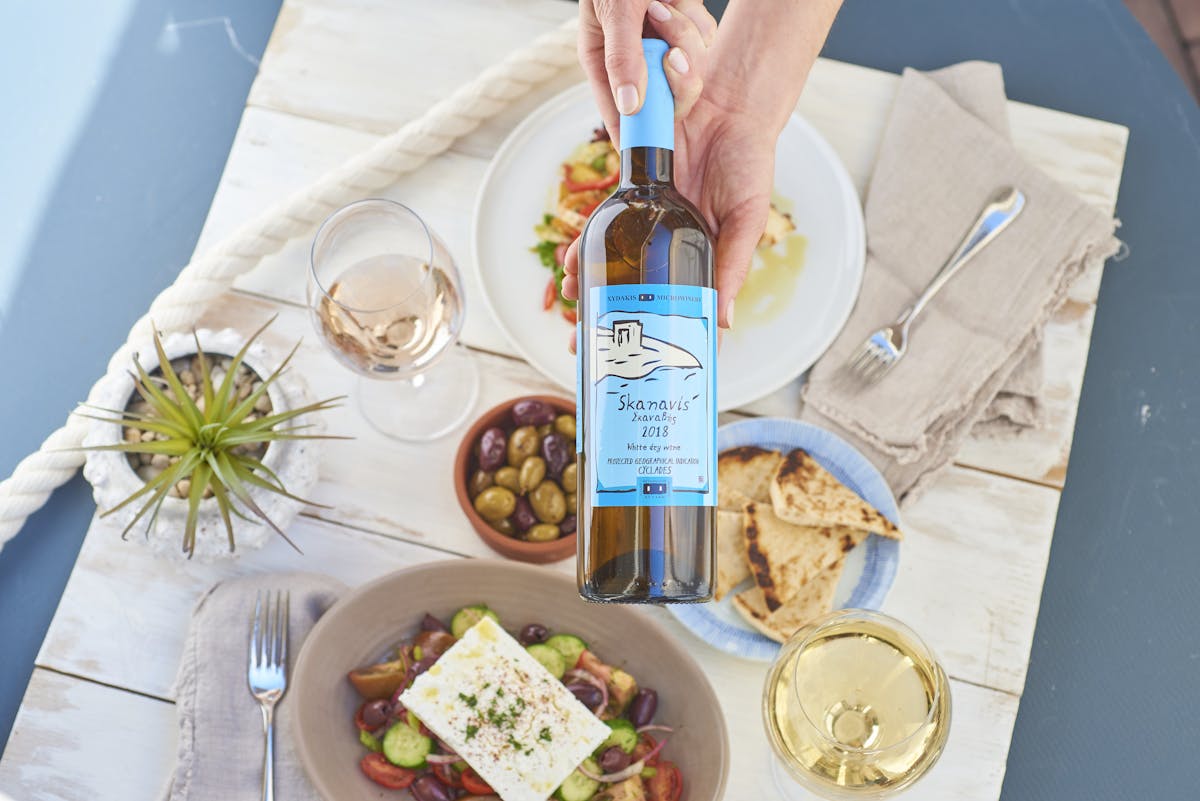Of Place and Pour: Ten Wines and the Stories They Tell at Calissa

The light in Water Mill has a way of stretching itself — across the gravel drive, across the tables on Calissa’s terrace, across the first pour of something cold and golden in a tall glass. It’s not the light of urgency, but of invitation, of unfolding. And it is under this light that wine begins to sing. The first bottle of the night might be the Meroi Pinot Grigio from Friuli — precise, citrus-etched, and brimming with white flowers. This is not your grocery store Pinot Grigio; it’s a wine with restraint and whisper, a wine that leans into Calissa’s lighter fare with quiet sophistication. Paired with the calamari — gluten-free, crisp, impossibly light — the Meroi’s subtle minerality dances just behind the lemon aioli and Calabrian chili, amplifying texture and teasing out the sea. Another arrival wine is the Domaine Sigalas ‘7 Villages’ Assyrtiko from Santorini, a bottle that speaks in the sharp dialect of volcanic soil and sea spray. It’s briny and electric, with a spine of acid that cracks like salt on skin. With Calissa’s grilled octopus, tender and charred, the wine becomes structural support — lifting the dish into something architectural. Or pair it with the Santorini fava, golden and soft, and let the Assyrtiko carve a path straight through the dish’s earth and heat. This is wine not as garnish, but as scaffolding — holding each note, elevating every forkful, stitching the moment together.
If there is one wine on Calissa’s list that behaves like an oil painting — something textured, layered, quietly regal — it is the Château Simone Rosé from Palette. This is not summer pink. It is not poolside. It is rosé as serious as a red, with depth and shadow and brushstroke. Built from Grenache and Mourvèdre, but also rare Provençal varietals like Manosquin and Castet, the wine arrives like silk in a highball — pale in color, but brooding on the palate. With the tomato-stewed gigantes beans or a slice of grilled halloumi, the wine pulls out vegetal notes, umami, a hint of stone. But it sings with the classic Greek salad. The feta, the olives, the late-summer tomatoes — they all ask for something with authority but not dominance, and Château Simone obliges. This rosé reminds you that pink wine can carry weight, that elegance can be muscular, that acid and tannin are not opposites but dance partners. And for those in search of something even more ephemeral, Calissa’s list includes the ‘Woman in the Wine Press’ by Vouni Panayia in Cyprus — made from the rare Morokanela grape, the wine is a study in aromatic complexity. With notes of lemon blossom, salted stone, and Mediterranean herbs, it finds its match in the striped bass or the whole branzino, where the flesh is delicate but the char brings smoke. The Morokanela, with its breeze-like elegance, threads through it all — a reminder that not every wine has to arrive with a bang; some drift in like music on a terrace.
Move inland and upward and you’ll find La Garagista’s ‘Harlots & Ruffians’ — a Vermont field blend from a biodynamic vineyard that looks more like a meadow than a monoculture. Made by Deirdre Heekin, this wine is wild in the best way — textured, orchard-fruited, with a finish that hums of cider skin and mountain air. It is the kind of wine that makes you want to cancel your plans and chase sheep across a hillside. And yet it pairs, brilliantly, with Calissa’s mezze — the whipped kafteri, the olives, the pita, the grilled eggplant. It doesn’t demand attention; it coexists. The acidity is friendly, the aromatics surprising, and it brings out the pepper and fire in the dips without smothering them. It is a wine that doesn’t behave, and that’s exactly why it works — especially in a restaurant that thrives on unexpected combinations. From there, you might slip into the warm gravity of the 3-liter Biblia Chora ‘Ovilos,’ a blend of Assyrtiko and Semillon that is less about “white wine” and more about pure presence. Poured from a large-format bottle, it has ritual. It commands attention. With a roasted chicken or the lobster pasta, it becomes symphonic. The Semillon gives it waxy weight, the Assyrtiko cuts through with lemon and chalk, and together they hold the dish in perfect balance. It’s the kind of wine that slows you down, that makes you look around the table and take a mental photograph.
For the main courses — the branzino, the lamb, the ribeye — Calissa’s wine list stretches deeper, moodier, more textural. The Parparoussis ‘Taos’ Mavrodaphne is a revelation: structured, floral, with black fruit and wet stone, a wine often misunderstood due to its sometimes sweet expressions, but in this dry expression, it stands tall. With lamb chops, it’s magnetic. The oregano and grill char pull forward the wine’s herbaceous edge; the fat of the meat softens its more angular tannins. This is a wine that carries mythology in its bones — a grape with roots in Achaia, grown on cliffs that overlook the sea. It reminds you that red wine has a place even in August, if the night is cool and the music is good. Or perhaps you prefer the Italian answer to grilled meats: Tenuta di Carleone’s ‘Uno’ Sangiovese from Chianti Classico, a wine that balances bright cherry with earth, acid with calm. With the grilled lamb or the lamb keftedes, the ‘Uno’ is seamless — a wine that nods to tradition but wears its collar loose. It’s both invitation and instruction: take a bite, take a sip, repeat. And then there’s the Kistler ‘Les Noisetiers’ — the Californian in the mix, the blonde bombshell with a serious side. Rich and textured but never overwrought, it’s a Chardonnay that pairs with everything and nothing, equally happy beside lobster as it is beside a conversation that goes long into the night.
But if there is a single wine that brings the table to attention — that draws the hand to the glass before the next plate is served — it is the Fredric Mugnier ‘Clos Maréchale’ Nuits-St-George 1er Cru. This is Burgundy at its most expressive: fine-boned, floral, detailed, and precise. The wine doesn’t shout. It doesn’t need to. It lingers. With grilled duck breast, it would be classic. At Calissa, it finds a home beside the lamb, or even with the more savory mezze — the gigantes, the dolmades — where its subtlety becomes a kind of seasoning. This is wine for people who listen. It changes in the glass, opens with air, becomes perfume. It’s the bottle you order when you want to say something without saying it. And for those who live in that space — where music, light, food, and memory swirl together like sediment in a bottle — it is unforgettable.
The magic of wine at Calissa is not in its showmanship, but in its synchronicity — the way each bottle reflects a dish, a mood, a moment. The list is curated not to impress, but to belong: to the salt air, to the late tomatoes, to the sound of laughter against clinking glasses. Whether it's a field blend from Vermont or a Premier Cru from Nuits-St-George, the point is not hierarchy. The point is harmony. To pour something that tastes like where it came from, and to pair it with food that tastes like where you are. Water Mill in July. Candlelight on your collarbone. A table that hums. A bottle that disappears. And a memory, preserved — not in stone, but in sip.

